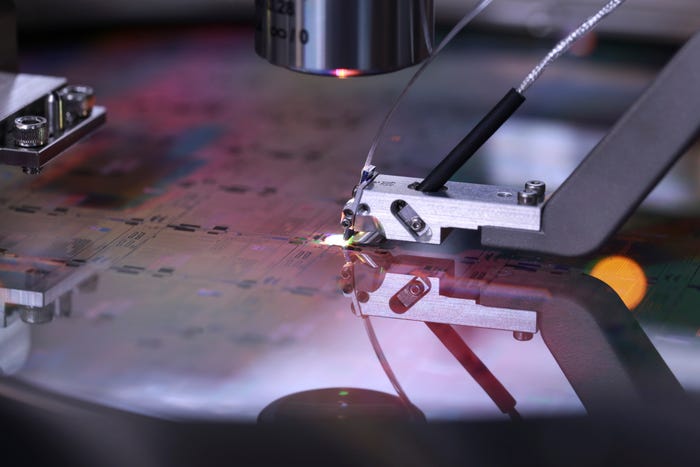Pioneering Surgery Uses AI to Help Quadriplegic Move, Feel
First-of-its-kind surgery that implanted microchips in the brain led to natural recovery even when system is turned off
.png?width=850&auto=webp&quality=95&format=jpg&disable=upscale)
In a first-of-its-kind surgery, microchips inserted into a paralyzed man’s brain let him move − and feel sensations − again. The patient, Keith Thomas, was able to channel his thoughts into electrical signals that powered his muscles and spinal cord, thanks to AI algorithms.
Northwell Health’s Feinstein Institutes for Medical Research in New York performed the double neural bypass surgery over 15 hours to form an ‘electronic bridge,’ enabling information to flow once again between the brain and body without staying hooked up to a computer in a lab.
“This is the first time the brain, body and spinal cord have been linked together electronically in a paralyzed human to restore lasting movement and sensation,” said Chad Bouton, professor in the Institute of Bioelectronic Medicine at the Feinstein Institutes, who developed the technology.
“When the study participant thinks about moving his arm or hand, we ‘supercharge’ his spinal cord and stimulate his brain and muscles to help rebuild connections, provide sensory feedback, and promote recovery,” said Bouton, who is also vice president of advanced engineering at Northwell Health.
Thomas, who is 45, suffered a spinal injury while diving three years ago. He was unable to move from the chest down. Four months after the surgery, he can wipe his own mouth with a napkin and scratch his face since one bicep has gained full strength. The first thing Thomas did after the surgery was squeeze his sister’s hand, which moved him to tears.
“There was a time that I didn’t know if I was even going to live, or if I wanted to, frankly. And now, I can feel the touch of someone holding my hand. It’s overwhelming,” said Thomas.
.png?width=NaN&auto=webp&quality=80&disable=upscale)
Keith Thomas Credit: Northwell Health
This clinical trial is different from the one conducted at the University of Lausanne, in which a brain to spinal cord interface enabled a paralyzed man to walk again.
“We are restoring both movement and the sense of touch,” Matthew Libassi, a spokesperson for Northwell Health, explained to AI Business. He noted that recovery in the arm and hand is “incredibly important” to quadriplegics, which represent half of spinal cord injury patients.
More than 100 million people globally suffer from some form of paralysis or movement impairment, according to Feinstein Institutes.
Prior research by Bouton as well as his peers that use a single neural bypass had limited success. While it did stimulate movement, patients have to stay hooked up to computers and stay in the lab.
Thought-to-Movement and Feeling: How it Works
Researchers and clinicians spent months mapping Thomas’ brain using functional MRIs to pinpoint the areas linked to arm movement and sensation. With this information, the surgeons implanted microchips into his brain. Thomas was awake for portions of the procedure, telling surgeons what sensations he felt in his hands as they probed his brain.
“Because we had Keith’s images, and he was talking to us during parts of his surgery, we knew exactly where to place the brain implants,” said Dr. Ashesh Mehta who performed the brain implant. “We inserted two chips in the area responsible for movement and three more in the part of the brain responsible for touch and feeling in the fingers.”
Two ports protrude through Thomas’ head connect to a computer that uses AI to read, interpret and translate thoughts into action.
It starts with Thomas thinking about what he wants to do, which sends electrical signals from his brain implant to a computer. The computer sends signals to electrode patches placed over his spine and hand muscles in his forearm. Meanwhile, small sensors at his fingertips and palm send touch and pressure data to his brain.
“This two-arm electronic bridge forms the novel double neural bypass aimed at restoring both movement and the sense of touch,” the researchers said.
Remarkably, other parts of his body is starting to show signs of natural recovery. Thomas is feeling new sensations in his forearm and wrist – even when the system is off.
In the future, scientists could completely disconnect the bypass and observe changes in his sensations. Thomas will fortify his own connections, a process called “plasticity.” The AI-infused surgery could treat or cure patients living with deafness, blindness, ALS, Parkinson’s, or stroke.
This article first appeared on IoT World Today's sister site, AI Business.
About the Author(s)
You May Also Like
.png?width=100&auto=webp&quality=80&disable=upscale)
.png?width=100&auto=webp&quality=80&disable=upscale)
.png?width=400&auto=webp&quality=80&disable=upscale)
.png?width=400&auto=webp&quality=80&disable=upscale)



.png?width=300&auto=webp&quality=80&disable=upscale)
.png?width=300&auto=webp&quality=80&disable=upscale)
.png?width=300&auto=webp&quality=80&disable=upscale)
.png?width=300&auto=webp&quality=80&disable=upscale)